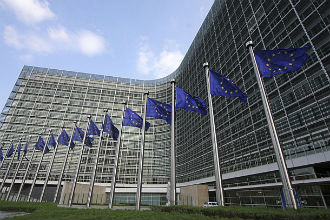 While the personal printer market is dying a significant death, Industrial 3D printing is growing.
While the personal printer market is dying a significant death, Industrial 3D printing is growing.
Beancounters at Context have been adding up some numbers and dividing by their shoe size and concluded that sales of industrial 3D printers continued to grow during 2018 while the personal printer market once again saw a decline.
According to the market intelligence firm, machine shipments of industrial models are projected to show a 27 per cent increase year-on-year, having already posted a strong 19 per cent growth during the first three quarters of 2018.
By contrast, sales figures for desktop 3D printers, which revealed a 13 per cent decline globally during Q1-Q3, are predicted to have continued in the fourth quarter, resulting in an overall reduction in worldwide shipments when compared with 2017.
The professional and design segments are also expected to reach single-digit positive growth for the year overall, despite single-digit declines in shipments year-to-date Q1-Q 3 2018.
Within the industrial 3D printer segment, polymer (plastic) and metal printer shipments saw robust growth during the first three quarters of the year.
Polymer model shipments rose by 12 per cent over the period thanks to steady increases in the US and Europe, as well as growth from manufacturers such as Carbon (up 65 per cent) and HP (up 31 per cent) – while significant domestic sales from China’s Union Tech also contributed significantly.
Industrial 3D metal printer brands such as GE Addictive, 3D Systems and EOS saw “nice growth”, while new, lower-priced models from brands such as Markforged “saw shipments soar in 2018”, Context said.
The market intelligence firm added that, while unit volumes are dominated by sub–$2,500 personal printers, more than 70 per cent of global printer revenues are generated by the industrial segment.
Context VP Chris Connery said: “The industrial segment saw good growth both in polymer 3D-printer shipments – up +31 per cent year-on-year – and metals 3D-printer shipments which were up a phenomenal increase of 62 per cent for the quarter.”
Despite final global shipping figures for personal 3D printers in 2018 being an unprecedented 370,000 plus, the figure could represent a “single-to-double-digit drop” on the approximate 400,000 total clocked up in 2017.
Sales stalled due to limited crowd source project wins, the impact of tariffs on Chinese goods shipping to the US, shipment declines for market leaders, as well as a shift back to DIY/kit solutions which only hobbyists find attractive, he said.
 Beancounters at Context claim that the European channel did rather well in 2020 despite the pandemic,
Beancounters at Context claim that the European channel did rather well in 2020 despite the pandemic,
















